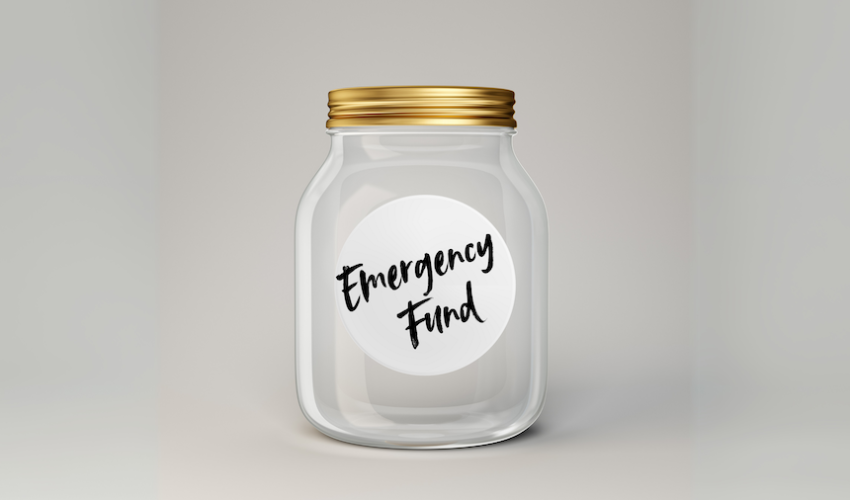Learn » Blog » Bouncing back: How to rebuild an emergency fund
Bouncing back: How to rebuild an emergency fund
Published on 04/04/2025
Topics:
education

You did the right thing. You spent the last year or two diligently building up your emergency savings - putting aside money bit by bit, staying disciplined, maybe even making a few sacrifices to get there. And then… life happened.
A job loss, a health scare, a giant vet bill (thanks Fluffy!), or an unexpected cost from left field meant you had to dip into - or even empty - your emergency fund. Staring at that empty account can be upsetting, we get it. But the moral of the story here is this: you had a safety net. And it caught you.
This is actually a win
You used the fund exactly how it was meant to be used. You avoided going into debt and protected your future self from high-interest loans or credit card payments. That emergency fund worked. Without that fund, the outcome of your financial emergency could have been far worse. So don’t be discouraged; reframe it as proof that you’re capable of building one and that it served its purpose. Well worth the effort.
Step 1: Take a breath and take stock
Before diving into rebuilding, do a quick check-in on your current financial position:
- Are you still in recovery mode from the emergency?
- Do you need a few weeks or months to stabilise?
- Has your income changed permanently (like a reduced salary or fewer working hours)?
This step is important - there’s no point trying to get straight back on the saving bandwagon before you’ve made sure you can meet your basic needs. Take some time if you really do need it. Update your budget if your situation has changed, work out what’s possible and THEN start rebuilding.
Step 2: Set a realistic new target
You might have aimed for 3 months’ worth of expenses before - and that’s still a great long-term goal - but it can be worth starting small to build momentum. Aim for $500 - $1,000 as your first milestone. That should be enough to cover an next unexpected dentist visit or broken phone without completely derailing your budget. Then, scale up gradually.
Step 3: Make saving automatic (again)
Automation is key. The less you have to think about this the better. If it worked the first time, it can work again. Set up a recurring automatic transfer - even $10 or $20 a week, if you answered "yes" to the third question above - and let it grow quietly in the background.
Step 4: Keep it separate
In the words of the wise Barefoot Investor, treat your emergency fund like a fire extinguisher - only to be used in an actual fire (metaphorical, or physical). Keep it in an interest-bearing savings account that you don’t see every day on your banking app and don’t have easy access to (no debit card for it, not connected to Apple Pay, etc). You don’t want to be tempted to dip into these savings for birthdays, holidays or impulse buys.
Step 5: Look for mini windfalls
Got a tax refund? Birthday money? Side hustle income? Consider stashing just some of this bonus money in to your emergency fund to speed things up without impacting your day-to-day budget.
Step 6: Celebrate your progress (even the small stuff!)
Rebuilding can feel slower than starting the first time, especially if your recent emergency knocked your confidence a bit. But every dollar saved is proof that you’re taking control. Track your progress visually (a little chart on the fridge, a spreadsheet, or even an app) and celebrate the milestones.
Having to start your emergency fund again doesn’t mean you failed. It means you were prepared. You’ve done it once. You can do it again. And next time a rainy day rolls in, you’ll be ready.
Want to learn more? We've compiled a bunch more emergency fund resources that could help:
- Our Money Made Simple Podcast episode #26: Rainy Day Funds - listen on Spotify or Apple
- Our blog on Rainy Day Funds, why you need one and how to set one up
- Sam Stubbs' book Money Made Simple, which covers Emergency Funds + a bunch of other essential financial concepts
The information provided and opinions expressed in this post are intended for general guidance only and not personalised to you. These materials do not take into account your particular financial situation or goals and are not financial advice or a recommendation. This post is not intended to convey any guarantees as to the future performance of any of the investment products, asset classes, or capital markets mentioned. Past performance is no guarantee of future performance. Information is current at the time of posting, and subject to change without notice. Simplicity NZ Ltd is the issuer of the Simplicity KiwiSaver Scheme and Investment Funds. For Product Disclosure Statements please visit our website simplicity.kiwi.


